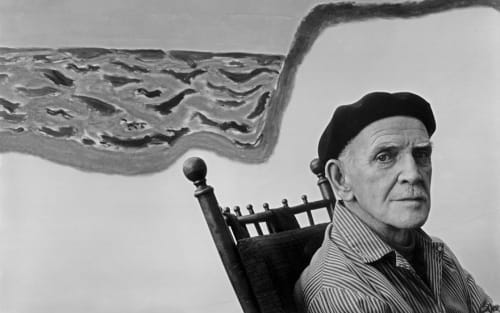Milton Avery (1885–1965) filled his quiet canvases with flattened planes and simplified figures, bridging early modernist movements such as Impressionism with mid-century genres such as color field painting. He was the husband of artist Sally Michel Avery and the father of artist March Avery and together they created a style uniquely their own - the “Avery style.”
Avery's work is seminal to American abstract painting—while his work is clearly representational, it focuses on color relations and is not concerned with creating the illusion of depth as most conventional Western painting since the Renaissance has. Avery was often thought of as an American Matisse, mostly because of his colorful and innovative landscape paintings. His poetic, bold and creative use of drawing and color set him apart from more conventional painting of his era.
Avery studied at the Connecticut League of Art Students and the School of the Art Society of Hartford. He exhibited in New York, London, Venice, and Los Angeles, and his works belong in the collections of the Art Institute of Chicago, the Brooklyn Museum, the Hirshhorn Museum and Sculpture Garden, the Museum of Modern Art, the Tate, and the Whitney Museum of American Art. His paintings have sold for seven figures on the secondary market.
